Life in the Glasshouse
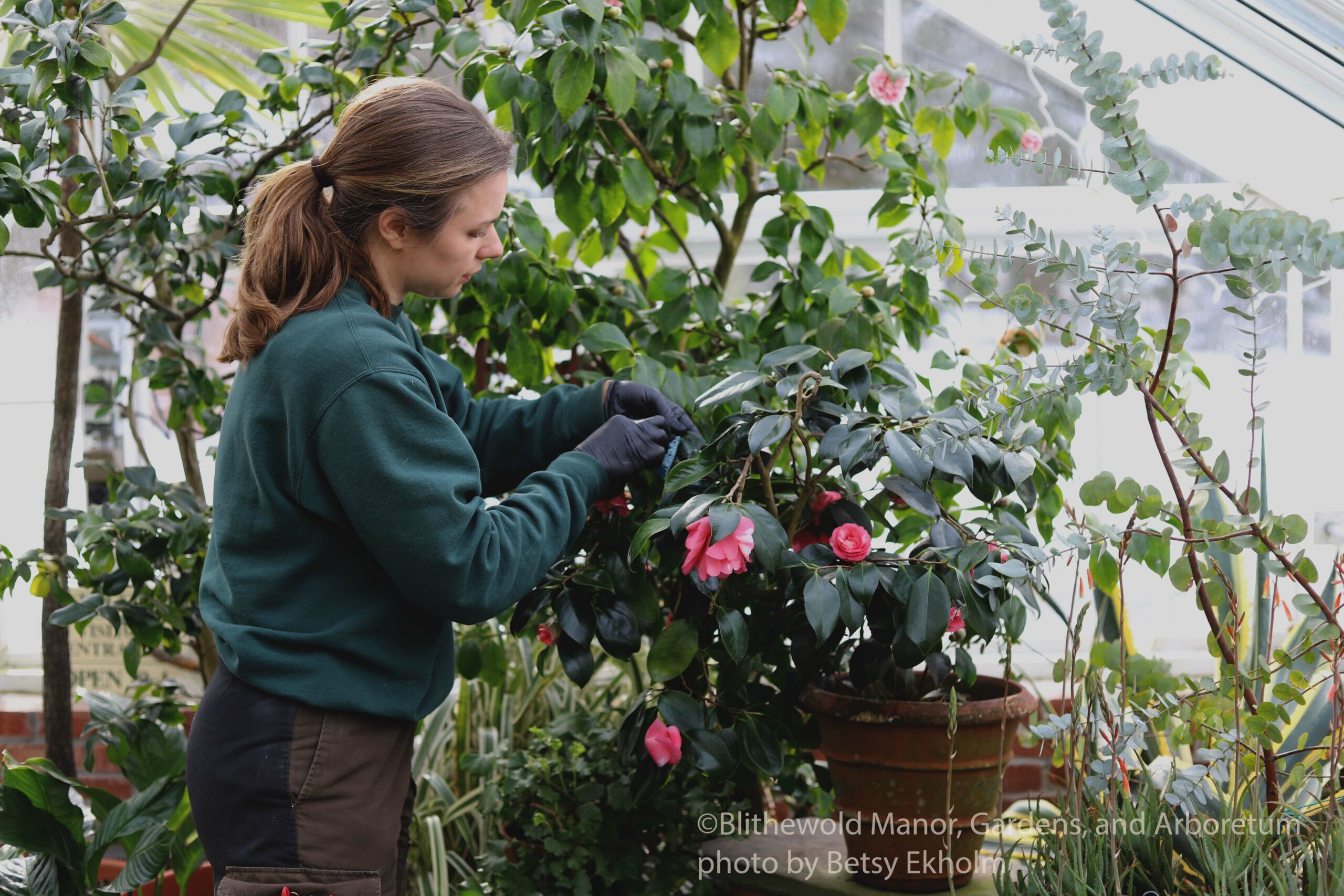
I am so happy to formally introduce you to Caitlin Ndoye. Caitlin joined the Gardens crew in November of 2023 as a horticulturist. We are thrilled to have her here in RI after her years spent at Brooklyn Botanic Garden as the Curator of several important areas over her time there, including: the Desert Pavilion and the Helen Mattin Warm Temperate Pavilion and Entry House & Trail of Plant Evolution. Her knowledge of collection plants will be on display in this (and future) blog posts. Welcome to the blog, Caitlin!
– Betsy Ekholm, Gardens and Greenhouse Manager
As a gardener I often get asked by curious friends, so what exactly DO you do in winter? The answer is, so many things! While the gardens sleep, much of our work shifts indoors. We begin the task of collectively planning for the next season; researching, organizing photos and data, processing collected seed, propagating, compiling plant and seed orders, attending seminars, and my personal favorite, tending to our container collection in the greenhouse.
In early fall when night temperatures begin to dip below 50 degrees, we bring our container collection inside. Seemingly overnight, every square inch of our greenhouse becomes filled with plants of all shapes and sizes, each with unique requirements for their watering, light levels, and environmental conditions. We squeeze them in, and group them as best we can according to these requirements. Little by little we comb through and assess the health of the collection by re-potting or propagating or painstakingly washing pests and their residue off leaves. For me, it is a labor of love. I feel part scientist, monitoring and recording the data of my test subjects, and part mother, tending to my 400 babies.
Although, love is not without its challenges. Caring for container plants under glass is a delicate balance. Watering during these cold months and short days can be the difference between life and death for your leafy friend. For example, during this time many plants in the collection experience a cool, dry dormancy and want very little water, whilst others want consistent moisture and humidity – and then there are those that don’t even want the hose pointed in their direction. But the benefit of this thoughtful watering and regular inspection is that you have the privilege of getting well acquainted with each plant.
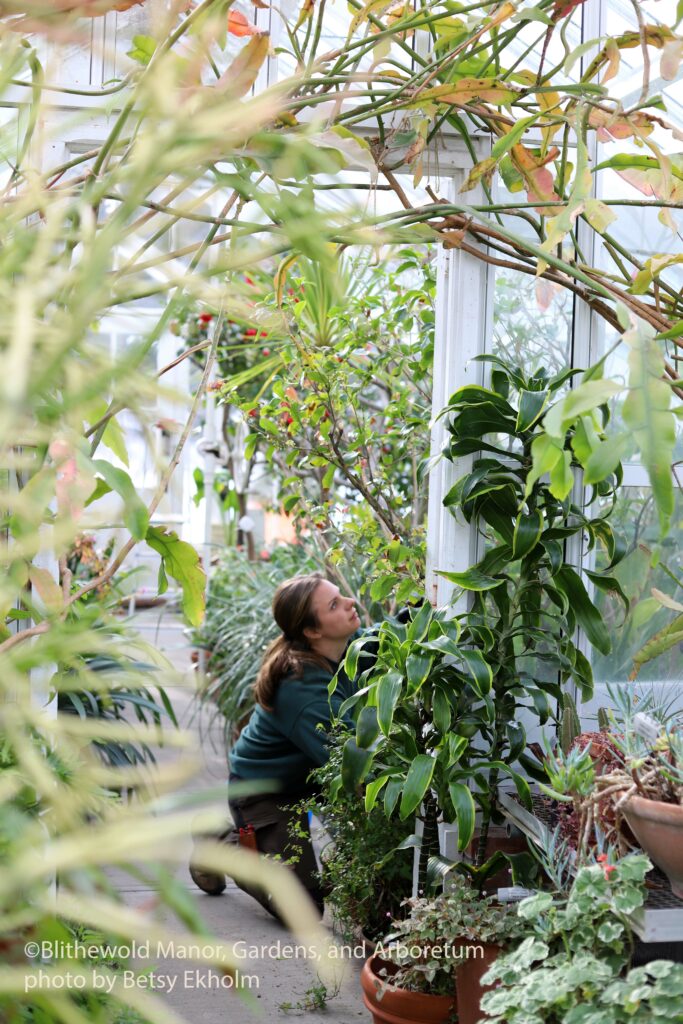
While I have a deep appreciation for our local flora, I have an equal appreciation and awe for our tender and tropical compatriots. So in lieu of taking a trip to Tahiti or Madagascar, the rainforests of Brazil, or the mountains of China (although I would love to visit all of these places), I can journey there through our collection plants and get a taste for some of the fascinating flora that lie beyond our climate.
In what I hope to become a series, I’ll highlight selected plants over the course of the season, beginning with three plants in our collection that are currently in bloom, and looking lovely.
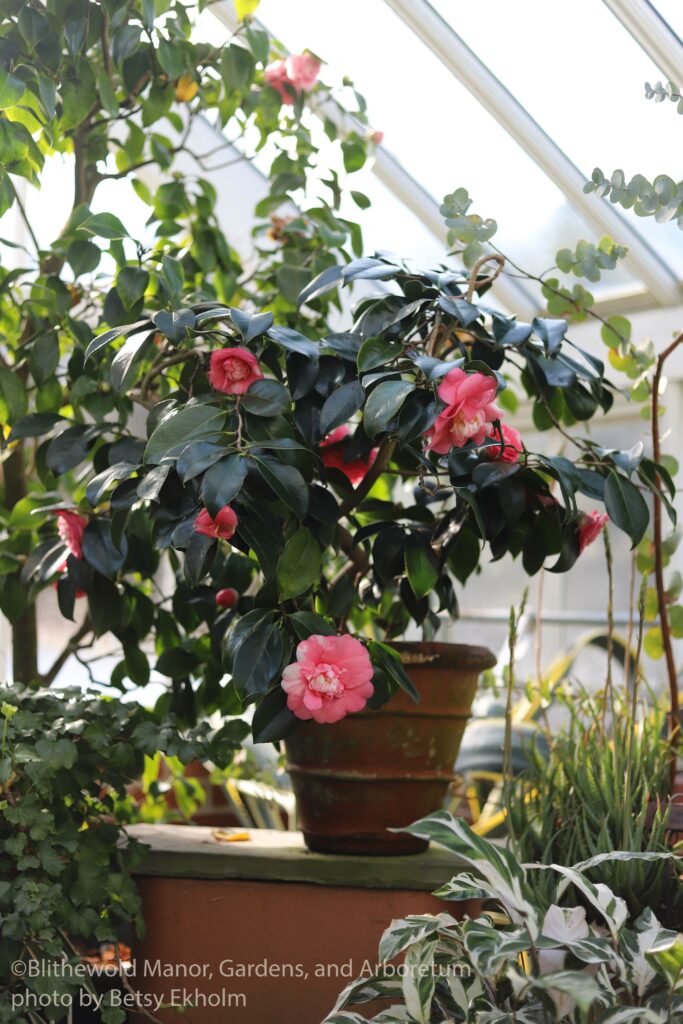
Name: Camellia japonica ‘Chandleri Elegans Variegated’
Common Name: Japanese Camellia, variety ‘Chandleri Elegans Variegated’
Family: Theaceae (Tea Family)
Etymology: The Camellia was named by Linnaeus in honor of a Jesuit priest serving in the Philippines, Joseph Kamel; japonica, meaning of Japan, where the Camellia was originally native to.
Native Habitat: Japan, China, Korea
Habit: Slow growing evergreen shrub for Zone 8-10, with pink and white anemone-centered double flowers. In the landscape, this Camellia can reach up to 6-8’ tall with potential for an equal spread. Grown in a pot, as ours is, the restricted root space keeps the plant much smaller. For example, our 30-year-old specimen is about 2’ tall and wide.
Culture: Grow in part shade in acidic soil. Water through the summer months, as this is when the flowers are generated. Aim to keep the soil moist and check it about 4in down – if it feels dry, then water well. Prune after flowering, if needed. Feed your camellias twice, once in early spring after they’ve finished blooming, with a fertilizer for acid-loving plants. For example, this could be in March and then again in May; in Spring you can also add a mulch of pine needles or pine chips/bark.
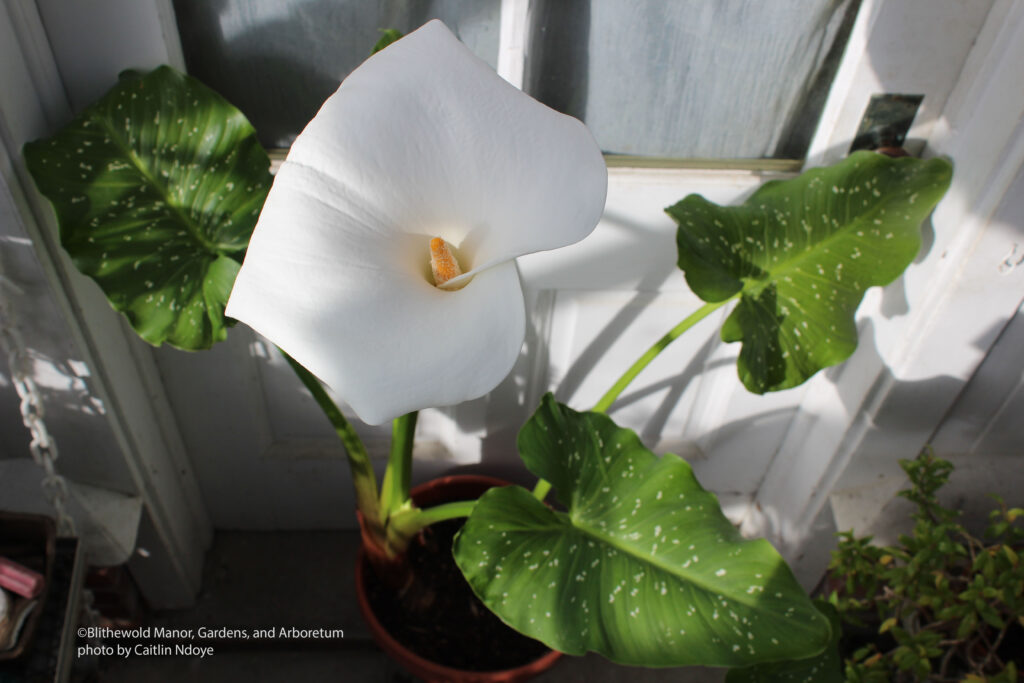
Name: Zantedeschia aethiopica ‘White Giant’
Common Name: Calla Lily, variety ‘White Giant’
Family: Araceae(Arum Family)
Etymology: Genus name honors Giovanni Zantedeschi (1773-1846), Italian botanist; aethiopica
means African, usually South African.
Native Habitat: South Africa and Lesotho, growing in a wide variety of locations including coastal marshes, and grasslands.
Habit: Semi-evergreen, clump-forming, rhizomatousperennial for Zones 7a-10b, up to 4-7’ tall and 3’4’ wide in optimum conditions. Waist high large green leaves with white speckles accompany tall pure white flowers with a yellow spadix.
Culture: Grow in full sun to part shade with consistent moisture throughout the growing season. During this time, you can top-dress with compost and if necessary, apply a balanced feed every few weeks while in flower. In containers they can be brought indoors before a frost, where they should be placed in bright indirect light.
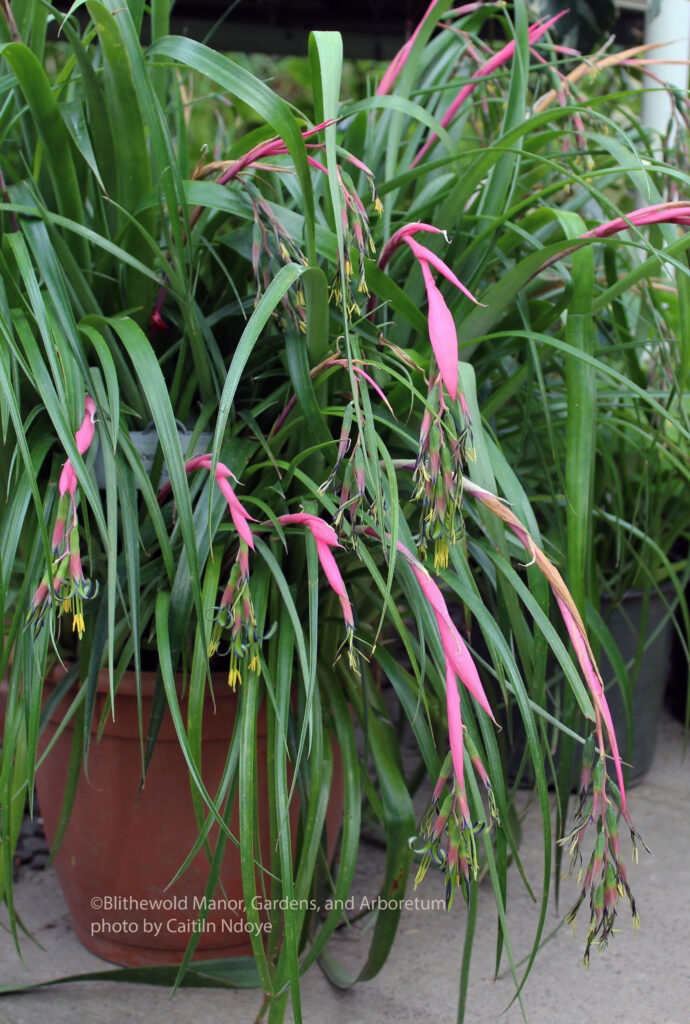
Name: Billbergia nutans
Common Name: Friendship Plant
Family: Bromeliaceae (Bromeliad Family)
Etymology: Genus name honors Swedish self-trained botanist Gustaf Johan Billberg; nutans, refers to the drooping or nodding nature of the flowers.
Native Habitat: Brazil, Paraguay, Uruguay, and Argentina.
Habit: Evergreen perennial andepiphytic bromeliad up to 2’ tall and wide; long grey-green leaves bearing pendulous pink, purple and green flowers. It is often found growing on tree branches in the rainforest and terrestrially, on the forest floor.
Culture: Grow in sharply draining soil with added organic matter, (like a Bromeliad soil mix), in part shade. Billbergia are fairly drought tolerant but appreciate their center funnels to be filled with fresh water.
The subtle lengthening of our days in February awakens both pests and plants alike. While it remains quiet outside, we forge ahead inside, doing our best to maintain a healthy growing environment. These efforts reward us, and all throughout the greenhouse plants are showing hopeful signs; buds on our Clivias, Citrus in bloom, new fronds on our staghorn and so much more that I look forward to sharing as the season unfolds.
